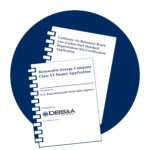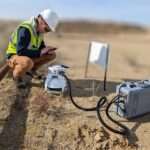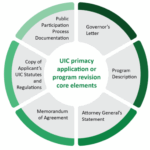Schnaar, G. 2024. EPA Permitting Process for Class VI UIC Wells (CCUS) and Current Industry Status (Invited Talk). Carbon Capture, Utilization and Storage (CCUS) Conference, Houston, TX. March 11, 2024.
Schnaar, G., C. Wolf, D. Schwartz, S. Finsterle. 2023. Permit Application Development for Planned Saline Formation Injection Project in San Joaquin Valley, California. Carbon Capture, Utilization and Storage (CCUS) Conference, University of Houston, Houston, TX. April 26, 2023.
Schnaar, G., et al., Correction TO: Birkholzer, J.T. et al., 2011. Brine flow up a well caused by pressure perturbation from geologic carbon sequestration: Static and dynamic evaluations. International Journal of Greenhouse Gas Control; Vol. 5: 850–861. Int. J. Greenhouse Gas Control (2013), http://dx.doi.org/10.1016/j.ijggc.2013.05.021
G. Schnaar. Federal UIC Regulations for Geologic Sequestration: An Integrated Approach of Site Characterization, Modeling, and Monitoring. American Association of Petroleum Geologists (AAPG) Rocky Mountain Section Annual Convention, June 2010. Durango, Colorado.
Schnaar, G. 2010. Geologic sequestration of carbon dioxide: simulation for regulators. International Energy Agency Greenhouse Gas Research and Development Program, CO2 Geologic Storage Modeling Meeting. February 2010, Salt Lake City, Utah.
Schnaar, G. 2010. Geologic sequestration modeling and federal regulations. Invited speaker at the International Energy Agency (IEA) Greenhouse Gas R&D Program CO2 Geological Storage Modeling Meeting, Salt Lake City, Utah, February 16, 2010.
Schnaar, G. and S. Cullen, 2009. The hydrology of geologic sequestration. Southwest Hydrology, Vol. 8, No. 5, September/October 2009.
G. Schnaar. Geologic Sequestration of Carbon Dioxide: Models, Codes, and Federal Regulations. TOUGH Symposium, September 2009. Berkeley, California.
G. Schnaar. Federal Regulations for Geologic Sequestration of Carbon Dioxide. Air & Waste Management Association, Carbon Sequestration 101 (via webinar), February 2009.
Schnaar, G. and N. Sweetland. 2008. Geologic sequestration of carbon dioxide: potential impacts to groundwater resources, the U.S. regulatory framework, and lessons learned from previous injection activities. Groundwater Resources Association of California Climate Change: Implications for California Groundwater Management. August 2008, Sacramento, California.
G. Schnaar. Standards for Geologic Sequestration of Carbon Dioxide, EPA Proposed Rulemaking, Signed July 15, 2008.
- Big Sky Regional Carbon Sequestration Partnership Annual Meeting, October 2008. Spokane, Washington.
- EPA Region 8 State UIC Workshop, October 2008. Salt Lake City, Utah.
- WESTCARB Regional Carbon Sequestration Partnership Annual Meeting, October 2008 (via webinar). Anchorage, Alaska.
- EPA Region 7 UIC Manager’s Meeting, September 2008 (via webinar). Kansas City, MO.
- Ground Water Protection Council Annual Meeting, September 2008. Session: Underground Injection Control (UIC) and Geosequestration Seminar.
- Electric Power Research Institute Fall Environment Council Meeting, September 2008. Baltimore, Maryland.
- Edison Electric Institute Global Climate Change Subcommittee Meeting, July 2008. Savannah, Georgia.





